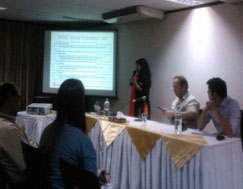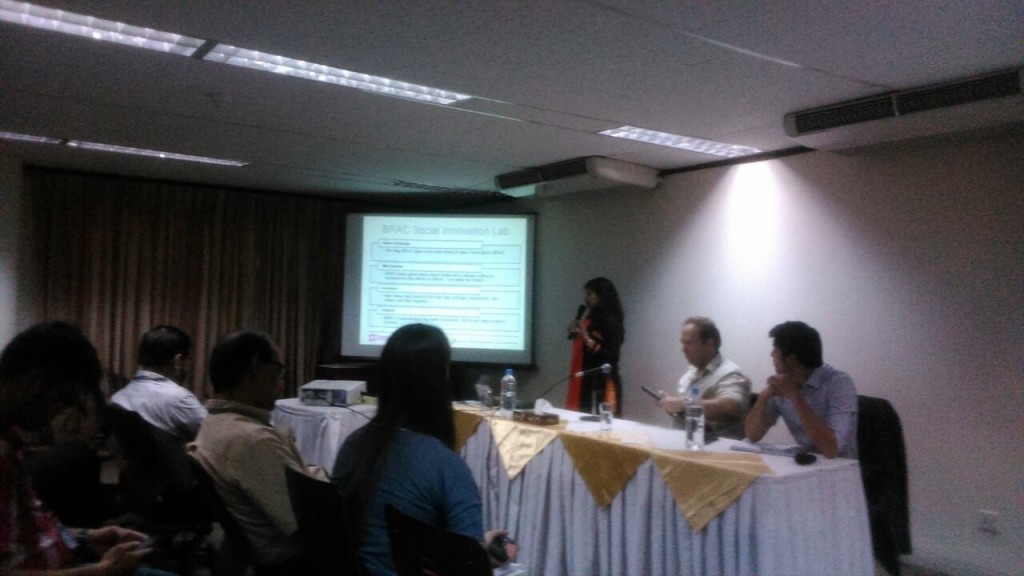By – Navid Helal
How can we possibly learn about innovation when there are very few resources detailing what it actually is? Innovation is apparent in the work that we do and it is inherent in the efforts of our clientele. Yet most of us, at best, are limited to having a general idea about this “concept” called innovation. If we can gain a firmer grasp on the determinants and mechanics of innovation, then we can further foster and develop its potency throughout all our projects and operations. But the question is how well do we know about our innovation.
On June 5, 2015, , Dr. William Johnson, Associate Professor of Management at the Black School of Business in Pennsylvania State University, came to BRAC to talk about Research into Innovation as a resource limited process in our Innovation Forum. He talked about the limitation of resources in innovation; that is to say, innovation is inherently resource limited and comes about from the intricate balance between the infinite realms of our imaginations and the actual amount of resources available in our respective environments. As any good ol’ economics textbook will tell you, humans inevitably face scarcity. Does this mean that our innovation is also limited? Although slack (excess) resources would improve the ability to engender innovation, Dr. Johnson promotes an alternative theory whereby the lack of slack resources causes us to think more efficiently and creatively within the difficult contexts we are given. Thus innovation is brought about as a need to survive; it functions as our oxygen.
As Margaret Atwood once said, “context is all”. Dr. Johnson showed that this too is the case for innovation through his qualitative research at the organizational level on ten firms in the US with diverse backgrounds. He found that the context of resource constrains is important in determining the type of innovation undertaken by firms. Reactive innovation is more likely related to financial constrains whereas proactive constrains will be more likely related to constraints in human and relational resources. Dr. Johnson also stresses the importance of design thinking and the use of abductive logic (what could be). He explains that since resource limitation provides a sense of direction and focus and design thinking provides flexibility and could-do logic, their interplay can result in what he phrases as Lean Innovation Capabilities (LIC), proving beneficial to the overall innovation process.
Dr. Johnson illustrates China as a good example of the development of innovation under limited resources. These limited resources include structural ones such as the political and education system. Dr. Johnson said that ideology can be the death of innovation and that is why Deng Xiaoping opened up China’s markets to the west, effectively making it a communist state with a free market. Similarly, he explains how Jack Ma, CEO of Chinese corporate giant Ali Baba, is speaking out against certain components of the Chinese education system which is hindering the processes whereby students can experiment, make mistakes and foster their growth towards thinking creatively.
The key takeaway from Dr. Johnson’s presentation is that innovation is not necessarily something that’s comes from abundance, but rather it is formulated when we require the skills and knowledge to tackle the challenges we face. In his words, Innovating with limited resources is a rule rather than an exception.
Navid Helal is an intern working with BRAC Microfinance programme.

